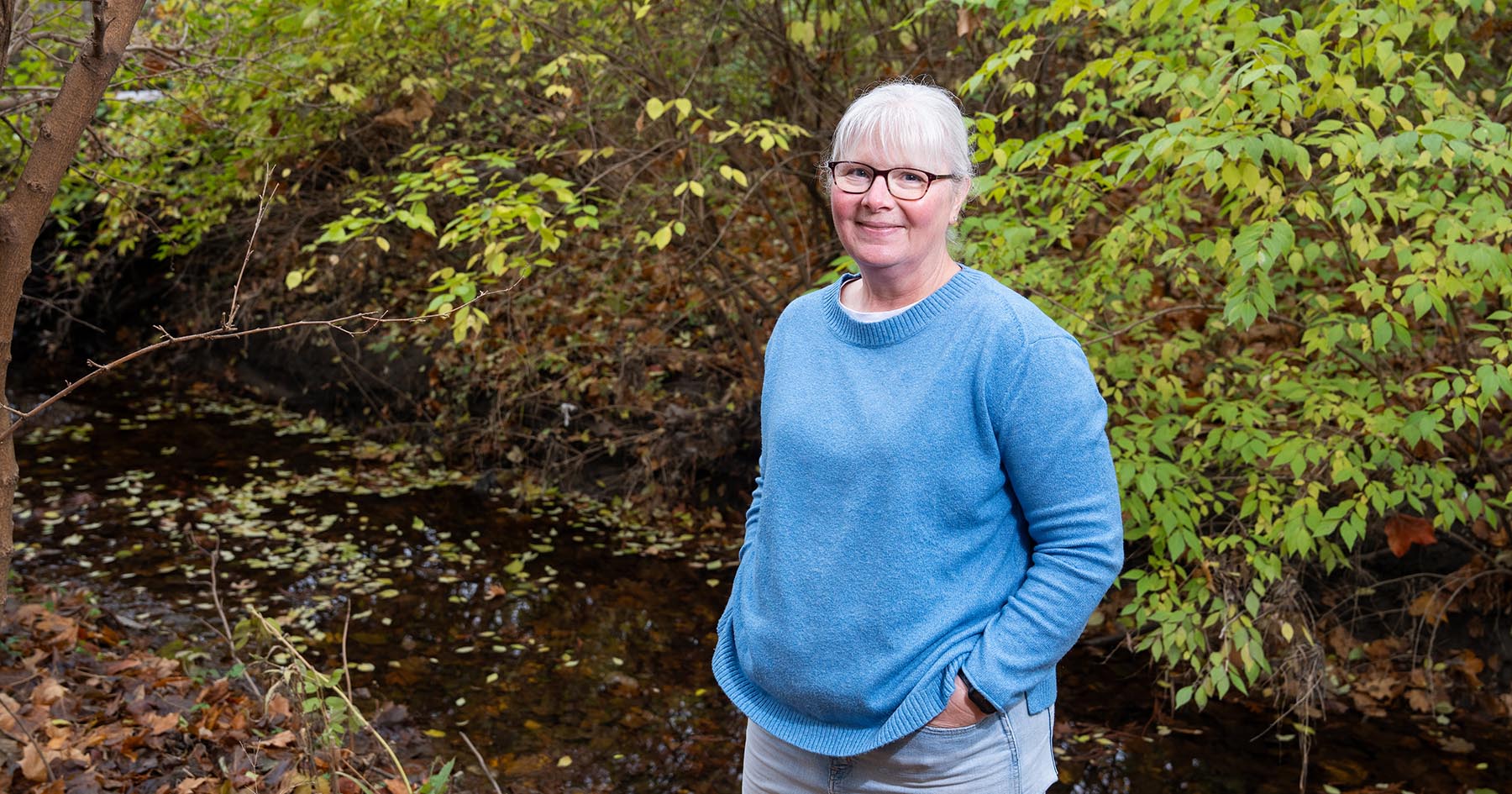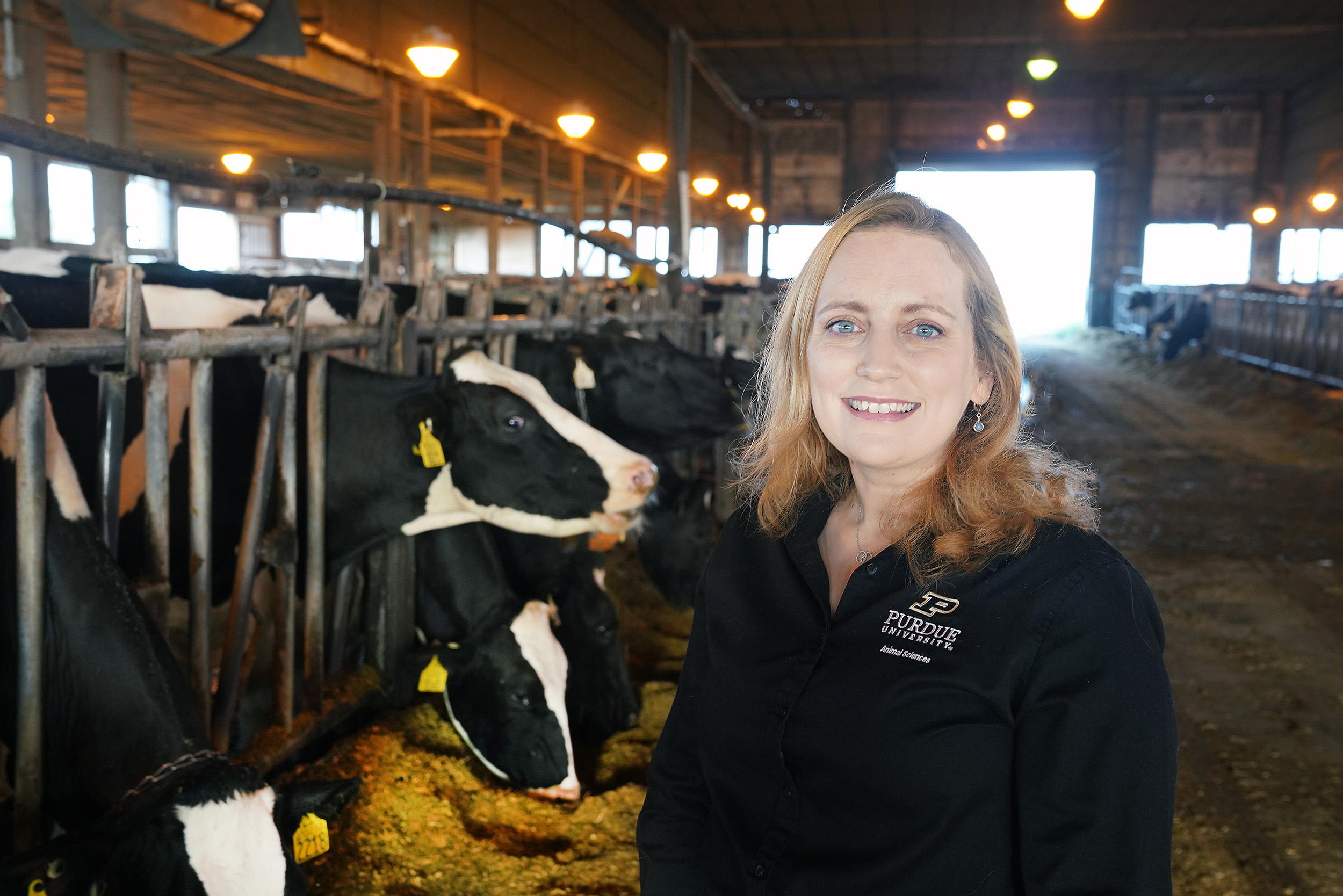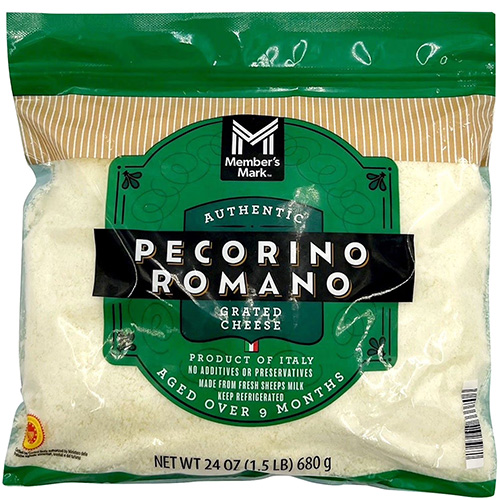International Women in Engineering Day: In Conversation with Somali Chaterji and Caitlin Proctor
International Women in Engineering Day spotlights women in various engineering disciplines and their achievements. Founded by the Women’s Engineering Society in the U.K., the day is now recognized in the U.S., by organizations like the Society of Women Engineers. The day brings awareness to female engineers, with the broader aim of increasing diversity, inclusion and representation in the field. On June 23, celebrating a decade of this observance, the theme is “Make safety seen.”
Somali Chaterji and Caitlin Proctor, assistant professors of agricultural and biological engineering at Purdue University, share their experiences and how they became inspired to pursue their careers motivated by role models and early passions. They also explain why it is important for the field to be more representative and how they connect to this year’s theme, offering advice to early-career engineers.
What inspired you to become an engineer?
Somali: I come from a family of engineers and doctors, which laid the foundation of my fascination for problem-solving and innovation. My mom is a genomics expert, my dad and brother are engineers, my grandpa was a doctor, and my grandma was a philosopher and mathematician. I assimilated what was around me growing up.
What captivates me about engineering is its transformative potential, or its capacity to turn abstract ideas into solutions for humanity's most pressing challenges. Engineering is a profession by the people and for the people, one where we can code, create, build, design and engage to make a positive impact. It's not just about ideation; it's about turning these ideas into tangible innovations, whether that's designing the complex algorithms that guide autonomous vehicles, interpreting patterns in gene expression levels for breakthroughs in precision medicine and vitality or encoding and processing volumes of noisy LiDAR data from sensors to navigate the physical world.
There’s a Herbert Hoover quote about engineering. An engineer before he became president of the United States, Hoover said, “It is a great profession. There is the fascination of watching a figment of the imagination emerge through the aid of science to a plan on paper. Then it moves to realization in stone or metal or energy. Then it brings jobs and homes to men. Then it elevates the standards of living and adds to the comforts of life. That is the engineer’s high privilege.”
What Hoover describes the power of engineering as a tangible thing that can save humanity. That’s what really pushed me in the beginning. And it's important to remember that this “high privilege” is not exclusive to men. History is full of remarkable women engineers, from Hedy Lamarr, who laid the foundation for modern wireless technologies like Wi-Fi, Bluetooth and GPS, to Radia Perlman, also known as the “mother” of the internet. They both made invaluable contributions to the field.
I’m also inspired by Ada Lovelace, the famous mathematician and first computer programmer. She was also the daughter of the renowned poet, Lord Byron, and her perspective was shaped by this fusion of the arts and sciences. Lovelace's blend of poetic and mathematical insights helped her envision the potential of Charles Babbage's Analytical Engine. She wasn’t just a cut and dry engineer; she deftly combined her poetic lineage with her scientific prowess.
I love poetry as well, so I related to transcending the disciplinary barriers, which is important when you’re building for the future and forging solutions that are far more luminous than the mere sum of their parts.
Caitlin: I come from a long line of male engineers, my grandfather, uncle and father, and I thought it looked like a lot of fun. I loved playing with Legos more than Barbie dolls. The part I enjoyed most about Barbies was putting together her house, so engineering seemed like a natural choice.
In college, I had a few great female professors who were leaders in their field. It was inspiring to watch my favorite professor do it all – she was a really great role model. I took a graduate level course with her, Microbiology in Engineering, and ended up working in her lab.
In her lab, I was working with wastewater, which smelled bad, so I switched to working with drinking water, which smelled better. I’ve been working on solving drinking water issues ever since.
In your opinion and based on your background, why is it important for engineering to be more representative?
Somali: Solving problems for humanity means considering all of humanity; anything less isn't truly representative. To create impactful products, it's vital to gather ideas from diverse minds, mirroring the varied user base that will ultimately engage with these products. Each individual brings idiosyncrasies and creativity to the table. Harnessing this diversity leads to products that cater to a broader range of needs and sparks ideas that may have otherwise remained unexplored. This approach ensures our products are not just innovative, but actionable, and universally beneficial.
Caitlin: There's so many diverse opinions that are important in engineering. In my field of drinking water, we often have a perspective of privilege in terms of drinking water access and safety. So, I tried to build my lab group with the intention of creating solutions not just for one privileged group, but also for all communities and the many ways people use water. In this way, you can create solutions that are more interesting and suit a larger population.
This year’s theme is “Make safety seen.” How do you connect to this?
Somali: Ada Lovelace's ability to see beyond the obvious – to transcend into the realm of the metaphysical – can enable engineers to understand the broader implications and potential risks of a new technology. This concept is at the heart of "Make safety seen." It is about understanding that technology, in all its forms, has the potential to impact our lives in profound ways, but also has the potential to have unintended consequences and thus needs to be designed and used with care.
In the same way, when we develop technologies today, such as Internet-of-Things (IoT) devices, like my recent project Sirius, self-driving cars, cloud computing platforms or genomics tools, we must take a holistic view. When we talk about safety in technology, it's a multifaceted concept. It could refer to physical safety, such as ensuring a self-driving car can safely transfer control back to a human driver during a software glitch. It could also mean data privacy, a crucial consideration in fields like genomics and healthcare where sensitive data is often handled; resilience, or the system's ability to recover from failures, is another aspect of safety; and financial safety when thinking about cloud computing or ensuring that we don't break the bank on computing resources. This is a common concern for tech companies dealing with heavy data processing and high computational demands. It is not enough to focus solely on the functionality and efficiency of these technologies. We must also consider their potential risks and impacts on safety, privacy and society.
Caitlin: So, many of the environmental hazards that we deal with today are unseen, whether that’s microbes that we can’t see in our drinking water or new chemicals that are emerging. We’re getting more and more aware of these hazards – even in pop culture. It’s great to see that people are more conscious of what’s in their water and what’s in their food.
Even with this growing awareness, I love surprising people with the fact that there’s thousands of bacteria in their “safe” water. Public outreach is an important component of my research because research needs to be translated into direct action to help people.
What do you encourage students to seek out at Purdue that would diversify their experiences and/or help them pursue their interest in engineering?
Somali: Dive into a lab early. Practical research, teaming up with graduate students and faculty and contributing to academic papers are all crucial experiences that can help shape your portfolio. Coding is vital – it sharpens your analytical thinking. In my lab, ICAN, I mentor two high school students. They actively participate in our projects. The critical factor is their readiness to learn and their commitment, sometimes even involving "packaging work" to get their research ready for submission to select venues. Reliability and work ethic are also key – they form the cornerstone of your professional character and propel your career.
It’s important to nurture relationships within your academic community. Internships, particularly at start-ups, offer a unique perspective into industry. For instance, our summer interns at KeyByte not only enhance our product development but also acquire a rich set of interdisciplinary skills. Courses, whether on-campus or online platforms like Coursera, provide a foundational knowledge base. Balancing research and coursework give you a comprehensive view of your future career path.
Also, bookmark some "me time!" Cultivate a passion that exists outside the circumference of your career. This could be the secret elixir to maintaining your sanity and stoking your passion in the long haul. After all, life isn't merely a string of sprints, it's a marathon that truly tests your grit and perseverance. So, be sure to intersperse your race with unhurried strolls, picturesque detours and thrilling deadline-induced dashes to the finish line.
Caitlin: It’s important to build a peer group that you’re comfortable with. It can be as simple as seeking out more friends with different perspectives to work on your homework with, or joining any number of clubs, like the Society of Women Engineers, or doing outreach and professional development. You can join a professional society or a club for your major.
In college, I was involved with the Society of Women in Engineering. We had Girl Scout days, where we brought the scouts to campus to show them cool engineering things. It was a way of paying it forward, getting younger kids involved in engineering and introducing them to engineering ideas.
Somali Chaterji is an assistant professor of agricultural and biological engineering and electrical and computer engineering at Purdue University. She is the founder and CEO of a cloud computing company called, KeyByte, since 2021. Chaterji also leads the Innovatory of Cells and Neural Machines Lab, or ICAN, which specializes in applied machine learning and data engineering. She received her Ph.D. in biomedical engineering from Purdue and went on to become a postdoctoral fellow at the University of Texas at Austin and a visiting assistant professor in computer science at Purdue. Her research focuses on the Internet-of-Things (IoT), cloud computing and computational genomics.
Caitlin Proctor is an assistant professor of agricultural and biological engineering and environmental and ecological engineering at Purdue University. She received her Ph.D. from Eidgenössische Technische Hochschule in Zurich, Switzerland, with research completed at the Swiss Federal Institute of Aquatic Science and Technology, or Eawag. She received her bachelor’s and master’s degrees in civil engineering from Virginia Tech. Her research translates the mechanisms of microbial community formation in engineered water systems to leverage these processes for safer systems.





